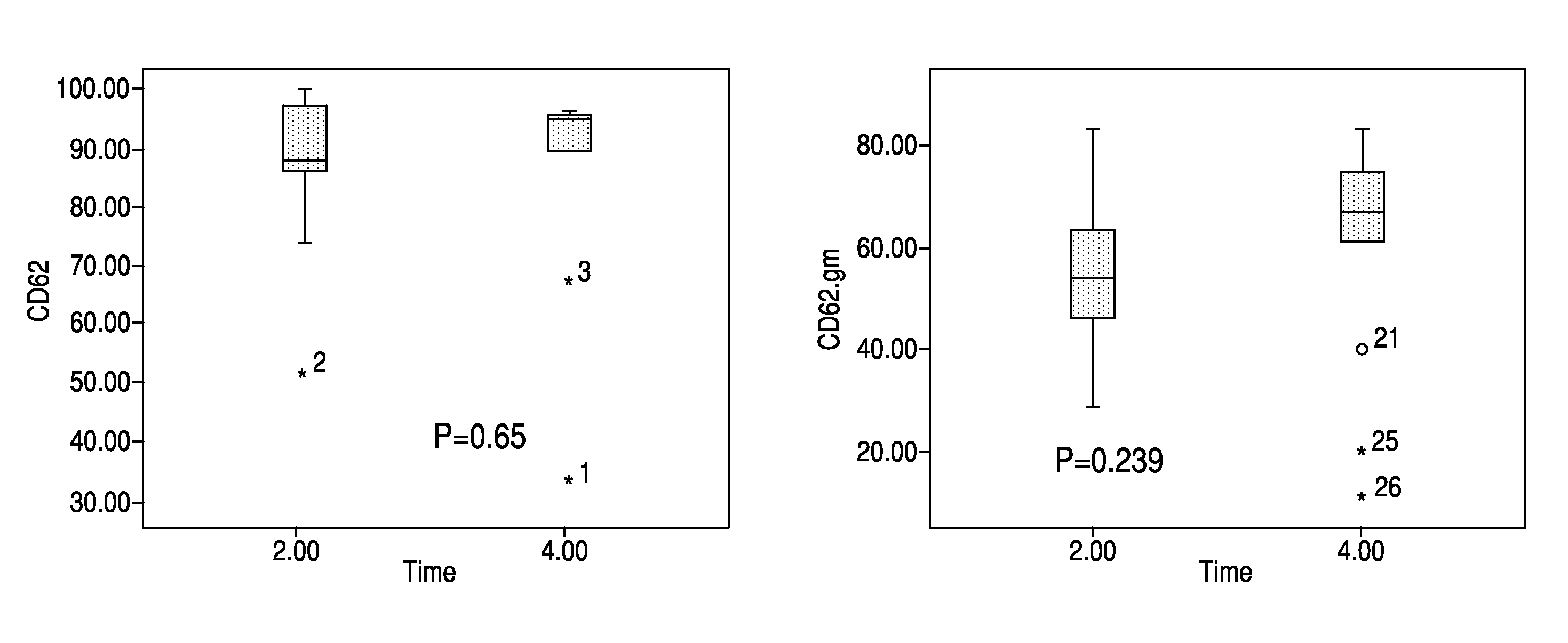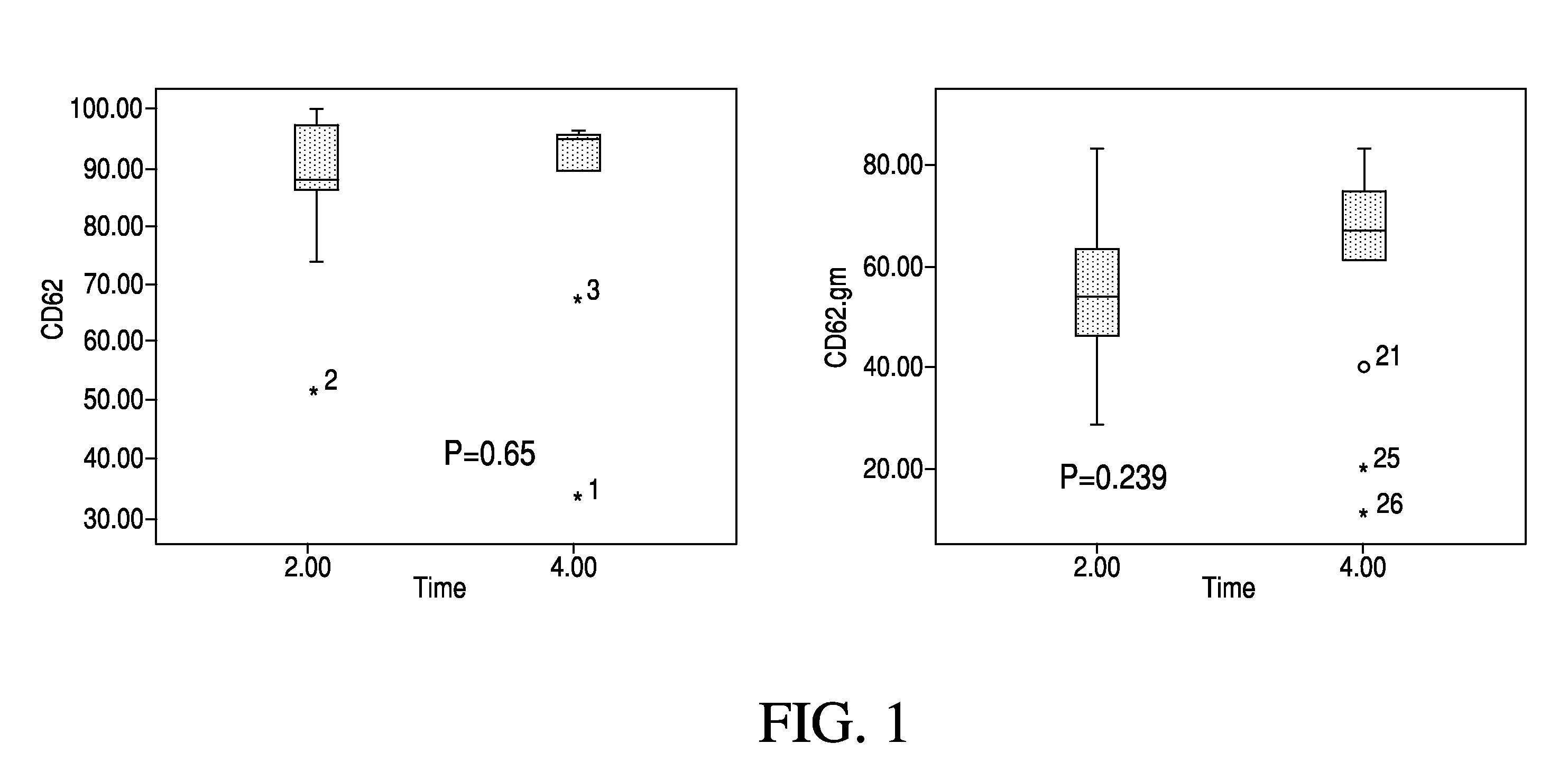High cut-off hemodialysis membranes for the treatment of chronic hemodialysis patients
a hemodialysis patient and membrane technology, applied in the field of high-cutoff hemodialysis membranes, can solve the problems of unclear whether protein-leaking membranes offer benefits beyond routine use, the cost of some albumin loss into the dialysate, and the inability to meet the needs of routine use, so as to reduce the risk of cardiovascular disease and reduce the activation of monocytes
- Summary
- Abstract
- Description
- Claims
- Application Information
AI Technical Summary
Benefits of technology
Problems solved by technology
Method used
Image
Examples
example 1
[0078]Thirteen prevalent ESRD patients were recruited into a crossover study. Inclusion criteria: a functioning fistula and normal albumin levels. Exclusion criteria: dialysis catheter, thrombosed fistula, smoker, immunosuppressants, recent infection.
[0079]Following a two week wash-in period using a standardized high flux dialyser (Polyflux® 170H, Gambro), patients received two weeks treatment using a high cut-off hemodialyser (HCO 1100™, Gambro). Patients received three dialysis sessions per week of four hours duration each. Blood flow rate was 250 ml / min and dialysate flow rate was 500 ml / min. Blood samples were taken and analyzed, immediately before and after one high flux dialysis session and one high cut-off dialysis session. In addition, blood samples (pre-dialysis) were taken and analyzed at the start and end of the two week period of high cut-off hemodialysis.
[0080]Blood samples were analyzed for pro-inflammatory cytokines and monocyte activation. Pro-inflammatory cytokines ...
example 2
[0082]Fifteen prevalent ESRD patients showing elevated CRP levels were recruited into a crossover study. Following a three week wash-in period using a standardized high flux dialyser (Polyflux® 170H, Gambro), patients received three weeks treatment using a high cut-off hemodialyser (HCO 1100™, Gambro) followed by three weeks treatment using a standardized high flux dialyser (Polyflux®170H, Gambro).
[0083]Patients received three dialysis sessions per week of four hours duration each. Blood flow rate was 250 ml / min and dialysate flow rate was 500 ml / min.
[0084]Blood samples were taken weekly and analyzed for content of CRP, IL-6, pro-BNP and other parameters. In addition, pulse wave velocities (PWV) in the arteria carotis of ten patients were measured with SphygmoCor at the start and end of the three week period of high cut-off hemodialysis. The results are shown in FIGS. 15-17.
[0085]As can be seen from the figures, the lowest concentrations of CRP, IL-6, and pro-BNP, respectively, were...
PUM
| Property | Measurement | Unit |
|---|---|---|
| molecular weight | aaaaa | aaaaa |
| molecular weight | aaaaa | aaaaa |
| diameter | aaaaa | aaaaa |
Abstract
Description
Claims
Application Information
 Login to View More
Login to View More - R&D
- Intellectual Property
- Life Sciences
- Materials
- Tech Scout
- Unparalleled Data Quality
- Higher Quality Content
- 60% Fewer Hallucinations
Browse by: Latest US Patents, China's latest patents, Technical Efficacy Thesaurus, Application Domain, Technology Topic, Popular Technical Reports.
© 2025 PatSnap. All rights reserved.Legal|Privacy policy|Modern Slavery Act Transparency Statement|Sitemap|About US| Contact US: help@patsnap.com



